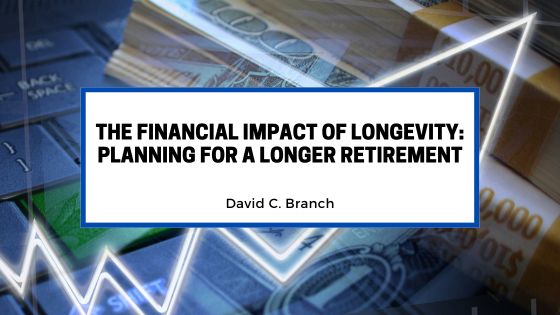People are living longer than ever before. While increased life expectancy is a positive development, it also presents new challenges—especially when it comes to retirement planning. A longer life means a longer retirement, and that can significantly increase the financial resources needed to maintain comfort, independence, and security over time.
Planning for a twenty or even thirty-year retirement is no longer unusual. This extended timeline changes the way individuals need to think about savings, investment strategies, and income planning.
Longevity Risk: What It Means
Longevity risk is the possibility of outliving your retirement savings. With advancements in healthcare and healthier lifestyles, it is not uncommon for people to live into their nineties or beyond. While this opens the door to more active and fulfilling retirement years, it also means your financial plan must stretch further than it might have for previous generations.
The traditional retirement age of sixty five is now often the starting point for a retirement that could last three decades or more. Without proper planning, this extended period can place a strain on savings and increase the risk of running out of money.
Adjusting Your Savings Strategy
To prepare for a longer retirement, individuals should consider saving more and starting earlier. If you are in your thirties or forties, increasing your retirement contributions—even by a small amount—can have a major impact thanks to compound growth over time.
Delaying retirement is another option. Working a few extra years not only allows more time to save, but also delays the need to start withdrawals, reducing the pressure on your portfolio.
Rethinking Withdrawal Rates
The traditional rule of thumb for retirement withdrawals—the four percent rule—may no longer be sufficient for extended retirements. With a longer time horizon, it may be safer to plan for a lower initial withdrawal rate, such as three or three and a half percent, to avoid depleting your savings too soon.
A more flexible withdrawal strategy that adjusts for market performance and personal needs can also help stretch your funds over a longer period.
Consider Long-Term Healthcare Costs
As life expectancy rises, so do the chances of needing long-term care. Healthcare is one of the most significant expenses in retirement and can increase sharply in later years. Planning for these costs is essential. This may include setting aside specific funds for healthcare or exploring long-term care insurance options.
Make Longevity Part of the Plan
Incorporating longevity into your retirement plan means thinking beyond traditional benchmarks. Work with a financial advisor to model scenarios that reflect longer life spans and the variables that come with them. Consider factors like inflation, investment returns, healthcare expenses, and lifestyle choices to create a realistic and sustainable strategy.
Final Thoughts
Living longer brings the promise of more years to enjoy life, pursue passions, and spend time with loved ones. But it also demands a more thoughtful and forward-looking approach to retirement planning. By preparing for longevity today, you give yourself the best chance of a secure and fulfilling retirement tomorrow.

